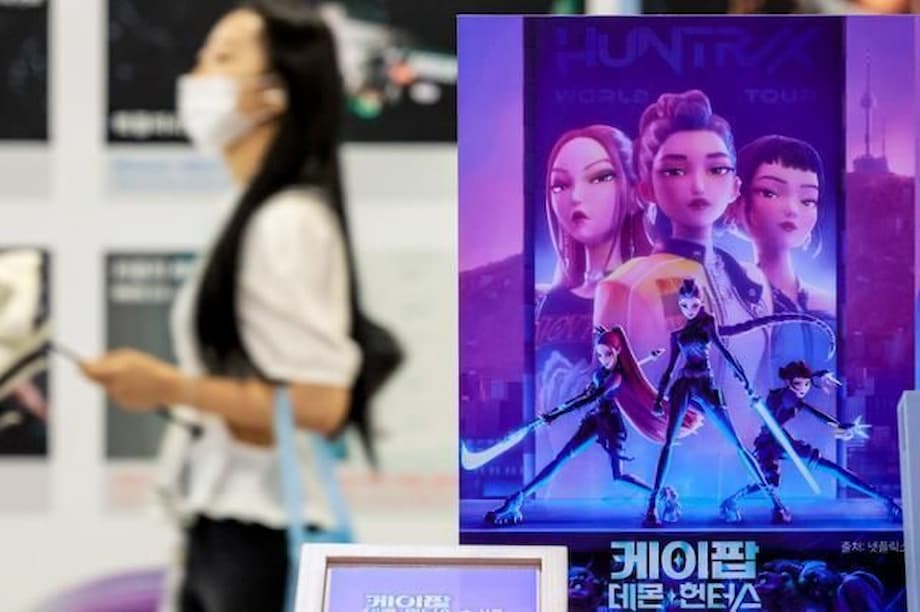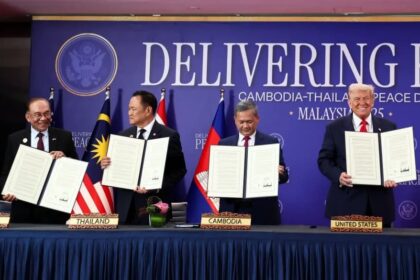The Rise of K-Culture: From Local Phenomenon to Global Powerhouse
In recent years, South Korea has emerged as a cultural juggernaut, captivating global audiences with its music, dramas, films, beauty products, and cuisine. The so-called “Korean Wave” or Hallyu—once a regional curiosity—has become a defining force in international pop culture. K-pop groups like BTS and BLACKPINK fill stadiums worldwide, Korean dramas dominate streaming charts, and films such as “Parasite” have won prestigious awards, including the Oscar for Best Picture. Korean beauty (K-beauty) and food exports have soared, and even video games developed in Korea are making waves on the global stage.
- The Rise of K-Culture: From Local Phenomenon to Global Powerhouse
- Why Korea Needs a ‘Next K’ Strategy
- From State Policy to Global Strategy: The Evolution of Hallyu
- Key Pillars of the ‘Next K’ Strategy
- Innovation and Technology: The Next Frontier for K-Culture
- Diversification: Beyond K-Pop and Dramas
- Soft Power and National Branding: The Broader Impact
- Challenges and the Road Ahead
- Lessons for the World: Korea’s Blueprint for Cultural Success
- In Summary
Yet, as the world celebrates the latest K-pop hits and binge-watches new K-dramas, experts and policymakers in Korea are asking a crucial question: What comes after the current K-culture boom? The answer, they say, lies in a bold new vision—dubbed the “Next K” strategy—that aims to sustain and expand Korea’s cultural influence for decades to come.
Why Korea Needs a ‘Next K’ Strategy
While the global success of K-culture is undeniable, there are growing concerns about its long-term sustainability. Industry insiders warn that relying solely on the popularity of K-pop and dramas could lead to stagnation as global tastes shift and competition intensifies. Fan fatigue, anti-Hallyu sentiment in some markets, and overdependence on international streaming platforms like Netflix and YouTube pose additional risks.
Samseog Ko, a leading expert on Korean content and IT policy, recently published “Next Korean Wave: The Future of Hallyu Shaped by Entertainment and Technology.” In his book, Ko highlights the challenges facing Hallyu, including a lack of content diversity and the need to adapt to the digital transformation and artificial intelligence (AI) era. He argues that Korea must innovate and diversify its cultural exports to maintain its competitive edge.
Samseog Ko writes, “The rise of generative AI and advanced technologies is transforming content creation, production, and consumption. The sustainability of Hallyu in the AI era depends on how Korea integrates entertainment and technology.”
Government officials echo this sentiment. Minister of Culture, Sports, and Tourism Yu In-chon has emphasized the need for forward-thinking policies and creative approaches to ensure Korea’s continued leadership in the global cultural landscape.
From State Policy to Global Strategy: The Evolution of Hallyu
Korea’s cultural ascent is no accident. It is the result of deliberate government strategy dating back to the late 1990s, when the country faced an economic crisis. Recognizing the potential of cultural exports, the government established the Ministry of Culture and invested heavily in K-pop infrastructure, academic programs, and the promotion of Korean content abroad. State incentives—such as tax breaks, subsidies, and even deferred military service for artists—helped fuel rapid industry growth.
Organizations like the Korea Creative Content Agency (KOCCA) and the Korea Trade Insurance Corporation (K-Sure) have played pivotal roles, providing financial support and export guarantees to content startups and creative businesses. These efforts have turned K-culture into a major export industry, generating billions in economic activity and enhancing Korea’s national brand.
Today, Korea’s cultural policy is a “grand strategy,” with significant budgets allocated to support film, broadcasting, gaming, music, and more. The government’s approach has evolved to embrace new technologies, diversify content, and foster international collaboration.
Key Pillars of the ‘Next K’ Strategy
In May 2024, the Ministry of Culture, Sports, and Tourism (MCST) unveiled the International Cultural Policy Promotion Strategy, designed to strengthen Korea’s position as a global cultural hub. The strategy is built on four main pillars:
- Innovating the international cultural policy support system
- Restructuring support projects for greater efficiency
- Supporting the overseas dissemination of K-culture
- Enhancing international cultural policy cooperation
The MCST aims to integrate all fields of K-culture—including arts, content, tourism, and sports—under unified branding initiatives such as “Korea Season,” “Touring K-Arts,” and “Korea Expo.” Korean Cultural Centers (KCCs) in 34 countries are being reimagined as key outposts for cultural exchange, while new content business centers are opening in emerging markets like Singapore, India, Australia, and Spain.
Financial support is also expanding. The Cultural Industry Guarantee program, launched by KOCCA and K-Sure, provides up to ₩1 billion (about US$740,000) in export guarantees per company, with total financing projected to reach ₩15 billion (US$11 million) in 2025. This initiative moves beyond domestic support, offering specialized tools for overseas expansion and helping content startups secure contracts and compete globally.
Innovation and Technology: The Next Frontier for K-Culture
One of the most significant shifts in the “Next K” strategy is the embrace of technology and digital innovation. The Ministry of Culture’s 2025 plan includes a Content Industry Future Strategy for the AI Era, outlining Korea’s AI content roadmap through 2035. This strategy aims to harness artificial intelligence for content creation, production, and distribution, ensuring that Korean cultural products remain at the cutting edge.
Major projects are underway, such as the K-Content Cultural Complex, Global Video City, and the Hall of Fame for Popular Culture and Arts. These initiatives are designed to shape the future of K-content over the next 30 years, blending entertainment, technology, and immersive experiences.
Metacube Square, a new enter-tech platform in Songdo’s Incheon Free Economic Zone, exemplifies this trend. Inspired by the global success of K-Con events, Metacube Square is being developed as a hub for immersive new media art, interactive content, and digital innovation. The goal is to create a permanent destination where culture, technology, and storytelling converge, attracting creators and audiences from around the world.
Diversification: Beyond K-Pop and Dramas
To avoid overreliance on a few cultural products, Korea is actively diversifying its exports. The government is investing in sectors such as gaming, webtoons (digital comics), animation, and even K-food and K-beauty. The success of games like “Stellar Blade” on PC demonstrates Korea’s growing influence in the global gaming industry, while webtoons and animation are gaining traction in international markets.
Efforts are also underway to expand cultural exchange and cooperation with countries around the world. Festivals, business centers, and collaborative projects are being launched in regions as diverse as Southeast Asia, the Middle East, Europe, and North America. The upcoming Beyond K Festa and Years of Mutual Cultural Exchange with countries like Japan, China, Canada, and Italy are part of this global outreach.
Soft Power and National Branding: The Broader Impact
Korea’s cultural strategy is about more than entertainment—it is a form of soft power that shapes global perceptions and strengthens diplomatic ties. Cultural exports have become engines for commerce, diplomacy, and national branding. Major moments, such as PSY’s “Gangnam Style,” BTS’s global tours, and the international success of “Squid Game,” have reinforced Korea’s image as a creative and innovative nation.
Even geopolitical dynamics are influenced by K-culture. China’s recent decision to lift its unofficial ban on Korean cultural products, imposed in 2017, reflects the importance of cultural exchange in bilateral relations. As China seeks to improve ties with South Korea amid US-China tensions, the resumption of Hallyu events and content approvals is seen as a diplomatic olive branch.
Challenges and the Road Ahead
Despite its successes, Korea’s cultural industry faces significant challenges. Anti-Hallyu sentiment, content fatigue, and the dominance of global streaming platforms threaten sustainability. The industry must also navigate complex issues related to copyright, creator rights, and the ethical use of AI in content production.
Domestically, there are debates over the direction of cultural policy. In the lead-up to the 2025 presidential election, candidates have outlined contrasting visions: one focused on making Korea a top-five cultural powerhouse through economic growth and global competitiveness, the other emphasizing cultural equity, regional access, and balanced development.
To address these challenges, the government is pursuing amendments to the Copyright Act, enacting the Publicity Rights Act, and expanding social insurance and support for artists. The Basic Act for Hallyu Industry Promotion, which takes effect this year, will guide mid- to long-term strategies for industry development.
Lessons for the World: Korea’s Blueprint for Cultural Success
Korea’s journey from economic crisis to cultural superpower offers valuable lessons for other countries. As highlighted in international analyses, the key to Korea’s success lies in its ability to turn culture into a scalable product, backed by policy support, investment in intellectual property, and a focus on storytelling and branding.
For example, Indian startups are encouraged to learn from Korea’s approach by embedding narrative infrastructure, export-readiness, and public-private partnerships into their own cultural industries. The Korean model demonstrates that culture, when strategically developed and supported, can become a powerful driver of economic growth and global influence.
In Summary
- Korea’s “Next K” strategy aims to sustain and expand its global cultural influence beyond the current K-culture boom.
- The government is investing in technology, AI, and diversification to keep Korean content at the forefront of global trends.
- Financial support, export guarantees, and international collaboration are key components of the new strategy.
- Korea’s cultural exports serve as engines for soft power, diplomacy, and national branding.
- Challenges remain, including content fatigue, anti-Hallyu sentiment, and the need for policy innovation.
- The “Next K” strategy offers a blueprint for other countries seeking to leverage culture for economic and diplomatic success.












